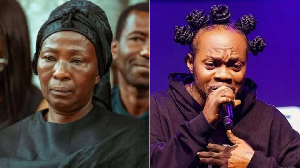THE DIFFERENCE BETWEEN TECHNICAL KNOWLEDGE AND QUACKERY
The reactions by functionaries of the government to the release of the results of an opinion poll by the polling body, Synovate, make for very interesting reading indeed. Even though these government officials have rubbished the results, which give the flag bearer of the NPP, Nana Akuffo Addo, a slight edge over president Mills on the basis of such technicalities as sample size, methodology, margin of error etc., for me these views and comments have served to underscore a very critical need as far as the running of the affairs of the nation is concerned: technical knowledge and competence.
It appears like we have reached a stage in our national evolution where we are sacrificing technical knowledge on the altar of political expediency. These individuals who also happen to be at the helm of the management of national policies and programmes have clearly demonstrated a lack of knowledge of basic statistics, a sine qua non of their work as formulators and implementers of development policies. I am equally miffed by the uncharacteristic silence so far of those who are supposed to be number crunchers at the monitoring and evaluation unit in the presidency over this shameful exposure of ignorance by their fellow political apparatchiks in the ministries.
The first to attack the poll results was the deputy minister of Science and Environment, one Dr. Omane Boamah, who argued, rather cryptically, as follows: “….the poll itself is fundamentally flawed [because]….for you to go for somebody within the household and assume that that person is going to be representative of the household’s preferences, in my view, is just a way of raping the sovereignty of the other members of the household who are at the voting age in terms of their voter preferences”.
As anybody with even rudimentary knowledge of statistics 101 will attest to, this position is either a deliberate distortion of the essence of sampling or a clear betrayal of a fundamental understanding of the nature and uses of sampling in opinion polls in particular, and survey research in general. Sample surveys everywhere in the world are based on proven theory of probability and proceeds on the basis that rather than studying whole populations (which the constraints of time and money do not render sustainable), through a process of randomization, a subset of a broader population (in this case all Ghanaian voters) can be used to accurately estimate the population parameters or the true voter preferences in the population. So, the short answer to Dr Boamah’s dilemma is that the households are simply used as units to select adult individuals whose responses to the survey questions(s) are ultimately aggregated and used to estimate the true values of the population parameters rather than representing the opinions of other members of the selected households according to Dr. Boamah.
The deputy minister for information, Okudjeto-Ablakwa and Twum Boafo, the Executive Director of the Ghana Free Zones Board, were the next in the queue to trash the results of the poll with the duo invariably describing the results as bogus, voodoo statistics etc. saying that the “sample size does not fall within the margin of error….”. Perhaps at this point I should pause and pose the question: What at all do these gentlemen mean by statements and phrases such as the sample size does not fall within the margin of error and household methodology? Here again, we are clearly witnessing the misuse of important technical concepts like sample size and margin of error to blindfold the public for propaganda purposes. To digress a little, a sample size refers to the total number of people selected to respond to the questions in a survey, while a margin of error, which is usually expressed in quantitative terms, is an indicator of the difference between the sample estimates and the true population parameters, the estimation of which is the ultimate goal in any sample survey.
In other words, as a result of studying a small part of the population instead of everybody in that universe, an error is bound to occur. The fundamental question every survey research strives to answer therefore is: does a particular [sample] estimate (e.g. Nana Addo’s 43%) reflect the true voter preference in the broader voting population or did it occur by a mere chance? Of course there is a relationship between a sample size and a sample’s margin of error in that the larger the sample size, the smaller the margin of error and vice versa.
Given the above definitions of sample size and margin of error, it should be clear to Hon. Ablakwah and Mr. Twum Boafo that sample sizes can neither fall within nor outside the margin of error as indicated by them but rather sample estimates are assessed based on the margin of error. I do not have the information regarding the margin of error in the specific case of the Synovate poll but “conventionally” a sample size of about 1,500 respondents is associated with a margin of error of between 3% and 4%.
So, if for the sake of argument the Synovate poll’s sample size of 1,000 respondents had a margin of error of 4%-5%, what this means is that the true population value of for example, Nana Addo’s 43% lies somewhere between 38% and 48%, while Professor Mills’ true population value lies somewhere between 36% and 46% (±5%, i.e. using the upper limit of the error margin).
Also, rather than being a separate entity with its own heuristics and methodology, a pie chart, bar chart, trend curve etc. are simply graphic depictions of the sample estimates that are generated by the survey. Since these sample estimates are conventionally expressed in proportions or percentages they almost always amount to 100% as even a primary school pupil knows. However, because of rounding, a regular task in the analysis of survey results, this 100% total is occasionally exceeded but this situation hardly affects the substantive results of the survey.
The same lack of understanding of statistics and their interpretation leads these state ministers to indict the poll results on a related question about the performance of the economy. Specifically, they appear to be arguing that the same respondents who give Nana Akufo Addo a 2 percentage-point lead over the sitting president cannot turn around to say that they expect the economy to improve in the next 12 months (50%).
Two issues arise here. One, the Opposition could well argue the contrary, i.e. that 50% of the respondents did not expect the economy to improve in the next 12 months (one year). Second, even though I am not aware of how that particular question was phrased in the poll, but given the fact that in the minds of most Ghanaian voters the elections are just one year away (i.e. 2012), one could easily interpret the same statistic to mean that the 50% of the respondents who expected the economy to improve in the next 12 months were thinking of “improvement in the economy under a new government”!
In fact, such is the complicated business of generating and interpreting social statistics that in 1954 Darrell Huff published a book titled How to lie with Statistics. I shudder to think that we are reaching a stage in our national discourse where statistics are either going to be used or twisted to lie. The categorical imperative is that technical knowledge and competence, as opposed to quackery should be required on the part of those who have been entrusted with the responsibility of formulating, evaluating and monitoring the implementation of our national policies and programmes. There are millions of introductory statistics resources out there (books, monographs, articles etc.) but I would like to recommend this particular book for my three compatriots who, in their rush to prove their intellectual mettle, have instead exposed their ignorance in the field: Statistics for Dummies by Deborah Rumsey.
Professor Acheampong Amoateng, PhD., is a Senior Researcher with the Centre for Sociological Research, University of Johannesburg, South Africa. He was the Deputy National Coordinator of the Ghana School Feeding Programme in charge of Monitoring & Evaluation but was dismissed by the NDC government when it came into office in 2009.
Opinions of Friday, 29 April 2011
Columnist: Amoateng, Acheampong Yaw














